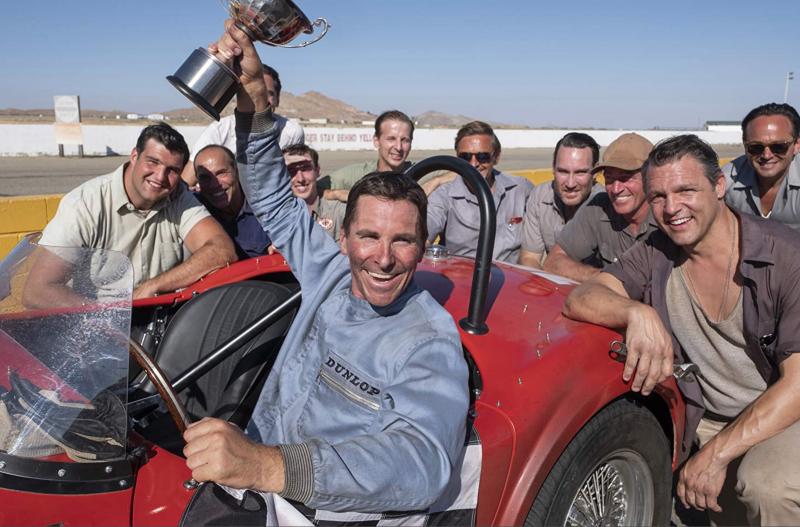Like a garage-kept, cherry-condition Mustang, “Ford v Ferrari” is the epitome of old-fashioned. It’s comfortable and familiar, but crafted with precision and undeniable care that throw back to a simpler cinematic time, before films were designed to blast us through the back of the theaters.
As the film lands us in 1963, we witness two automotive legends struggling to capture each other’s built-in buyers: Ford trying to escape its stodgy vehicles favored by older drivers, and Ferrari attempting to reach beyond its racing-enthusiast roots before bankruptcy strikes.
Just before Ford lands its deal to purchase the Ferrari empire, Enzo Ferrari himself (played by Remo Girone) announces that he cannot forgo the Ferrari name to a company that produces such unattactive autos.
Henry Ford II (played by Tracey Letts) is struggling to live up to his father’s and grandfather’s legacy, and becomes determined to craft a vehicle that will take the Le Mans racing trophy from perennial winner Ferrari. Le Mans is an arduous 24-hour blitz through the streets of Europe, considered the most prestigious event in the auto racing world. And Ford vows to snag victory from Ferrari, serving as a smackdown to the haughty company and elevating the Ford name in the process.
Ford turns to Carroll Shelby (played by Matt Damon), a former driver who actually beat Ferrari in 1959, but has since been sidelined due to a heart condition. He now spends his time designing competitive racing cars. Shelby agrees to work with Ford, planning to use a short-fused British driver Ken Miles (played by Christian Bale) as co-designer and driver during the race. Shelby and Miles face a number of setbacks, not the least of which comes from team Ford itself, which seeks to micromanage their efforts and calls them both into question throughout the process.
It’s certainly ironic that a film that features the power of ingenuity and breaking molds sticks so tightly to the script when it comes to underdog sports stories, but director James Mangold charts the film’s path with as few impediments as possible. He may linger a little too long on Miles’ go-nowhere home life, but when it comes to mounting the drama to the tension-filed race sequences, he excels.
Mangold and cinematographer Phedon Papamichael plant the audience in the passenger’s seat for much of the racing action and seldom take their foot off the gas. Both Damon and Bale demonstrate why they are top-tier actors, but neither is required to color too much outside their lines dramatically.
The same can be said for the film itself, which cruises at a safe speed inside the double yellow lines. That said, the ride offers a number of thrilling views and will benefit from being viewed on as large a screen as possible to pull viewers in even closer to the action.




















































